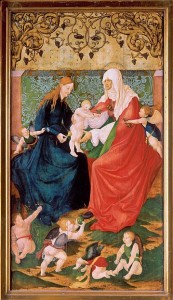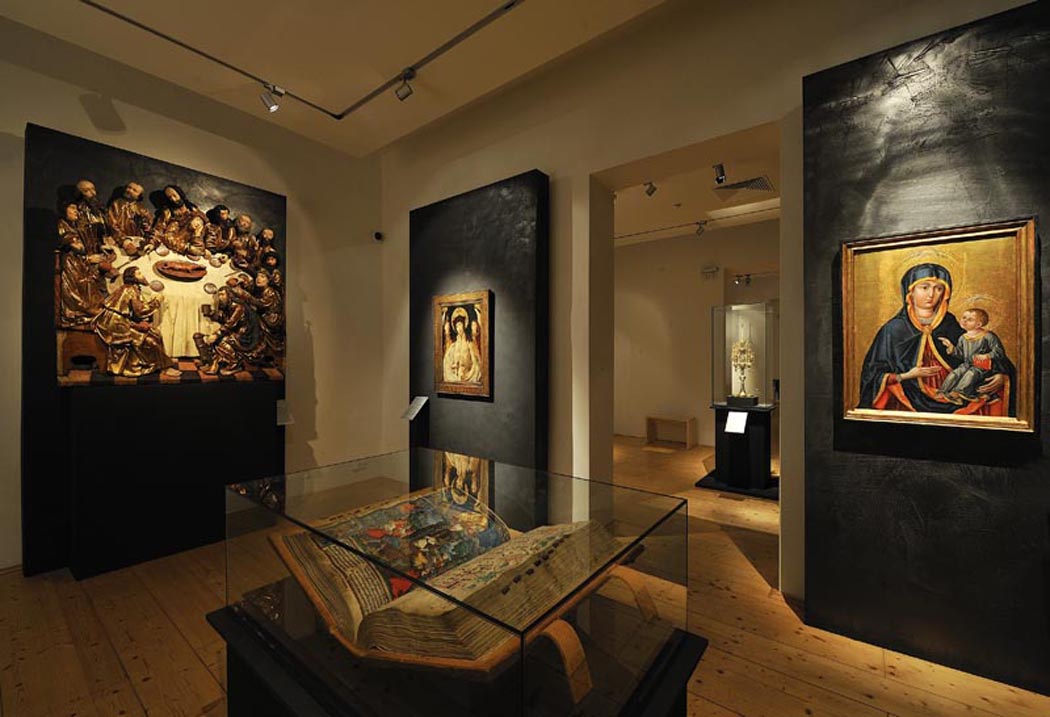Art and culture of Central Europe during the dynasty of the Jagellonians 1386 -1572
The key dynastic group of Late Medieval Central and Eastern Europe was without doubt the Jagellons. Progenitor was the Grand Duke of Lithuania, Vladislaus II (1351 -1434) who annexed the kingdom of Poland in 1386. His grandsons ended up as rulers of not only the Lithuania and Poland, but Hungary and Bohemia as well. How to get a grasp this dynastic entity, however, is complicated business.
To a start, one of the odd characteristics of Eastern European History is this focus on the concept of “dynasties” or “ruling houses”. Although such dynasties might encompass several distinct rulers of diverse landscapes or kingdoms, in terms of Eastern European History they were (and still are) considered belonging to the same “ruling dynasty”; which then is made to imply that these kingdoms were indeed ruled together, constituting an “realm” or an “empire”.
 To what extent the situation should rather be viewed as comparable to the German, where duchies and free cities created an amalgamated patchwork, kept together by the Holy Roman Emperor and the regular diets, is an open question. However, Polish historians favour a more nationalistic point of view, stressing the empirical character of the ruling dynasty, not least because the Hapsburgs were always considered the archenemy.
To what extent the situation should rather be viewed as comparable to the German, where duchies and free cities created an amalgamated patchwork, kept together by the Holy Roman Emperor and the regular diets, is an open question. However, Polish historians favour a more nationalistic point of view, stressing the empirical character of the ruling dynasty, not least because the Hapsburgs were always considered the archenemy.
How to get behind these different perspectives and figure out how state formation took place – and not least the cultural significance – has been the subject of a large research project housed at the University of Leipzig. While we are still waiting waiting for the large “Buch” (two volumes with 53 interdisciplinary articles written by theologians, historians, art historians, musicologists etc. and accompanied by 250 biographies to be published in 2013 or 2014), the chance is now to see an important traveling exhibition.
 The exhibition showcases the art and culture of Central and Eastern Europe – more precisely Lithuania, Poland, Hungary and Bohemia during the years 1386 -1572. Focus is more precisely on the period around 1500. More than 200 grand pieces of art will be on show. The exhibition will travel between three locations, each complimenting the core of exhibited art with a more local context. In Kuttenberg, where it opened on the 19th of May, the indsurty connected with the silver mines are presenting us with the perspective. Moving to Warsaw, architecture and culture will be at the centre. In Postdam the dynastic relations with amongst other families, the Hohenzollern, will provide the context.
The exhibition showcases the art and culture of Central and Eastern Europe – more precisely Lithuania, Poland, Hungary and Bohemia during the years 1386 -1572. Focus is more precisely on the period around 1500. More than 200 grand pieces of art will be on show. The exhibition will travel between three locations, each complimenting the core of exhibited art with a more local context. In Kuttenberg, where it opened on the 19th of May, the indsurty connected with the silver mines are presenting us with the perspective. Moving to Warsaw, architecture and culture will be at the centre. In Postdam the dynastic relations with amongst other families, the Hohenzollern, will provide the context.
On show will be:
- Panels, drawings and prints by Albrecht Dürer, Lucas Cranach the Elder, Hans Elfelser, Hans Krell, Holbein, Hans Süss von Kulmbach and others
- Richly illuminated manuscripts by the Krakow court painter, Stanislaw Samostrseelnik as well as royal and municipal charters, precious incunabula etc.
- Sculptures and relief of wood and stone by Veit Stoss and others
- The work of Jewellers and Goldsmiths like Melchior Beier, Marcin Marcinic etc.
- Coins, small-scale-sculpture and medals
- Liturgical and secular textiles
- Astrological tools and globes
- Amours, weapons and much else…
In short all the paraphernalia of the ruling classes of Late Medieval and Early Modern Europe.
The scientific catalogue will be published in January 2013
The official homepage – www.europajagellonica.eu – is unfortunately only in Polish.
However, the curators has prepared and English presentation which might be downloaded here
The venues for the exhibition(s):
19. 05.2012–30.09.2012 GASK – Galerie Středočeského kraje | Mittelböhmische Galerie Kuttenberg
29.10.2012–27.01.2013 Zamek Królewski w Warszawie | Königliches Schloss Warschau Museum Narodowe w Warzawie | Nationalmuseum Warschau
1. 03.2013–16.06.2013 Haus der Brandenburgisch-Preußischen Geschichte, Potsdam
